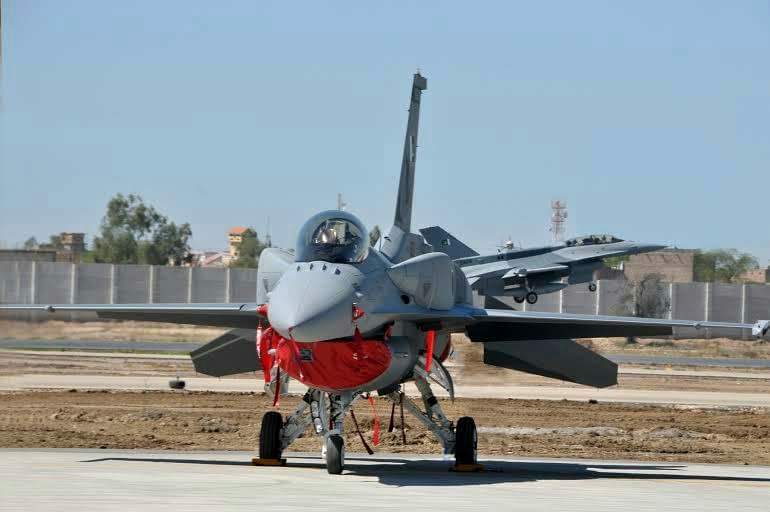According to the Pakistan Institute of Strategic and International Affairs (HSIA), the Pakistan Air Force has signed a supply contract with AVIC to supply J-10CE (export-type, also known as FC-20) fighter jets. As per the agreement, the Pakistan Air Force will start receiving J-10CE fighter jets by the end of 2021 and eventually reach the delivery scale of about 36 aircraft enough for two squadrons. The Institute believes that the number of J-10CEs purchased by the Pakistan Air Force, especially the “36”, is mainly to respond to the threat of the 36 French Rafale fighters purchased by the Indian Air Force.
In 2017, it was reported that Pakistan had placed the order for 36 J-10s, and it didn’t materialise. In 2019, China displayed a J-10C look-alike the FC-20E model at Dubai Airshow. Since then, rumours have circulated that Pakistan was interested in the model. In June 2021, a Chinese media outlet said the order had not materialised. On December 30, 2021, Interior Minister Sheikh Rashid Ahmed said Pakistan had placed the order for 25 JS-10 planes in view of India’s Rafale Aircraft purchase. The new planes will attend the Pakistan Day ceremony on March 23, 2022.
Also read: Pakistan orders FC-20E fighter aircraft or JS-10, an export look alike of J-10C
J-10 China’s Answer to the F-16 and MiG-29
J-10 series is China’s answer to the F-16 and MiG-29. Despite being of an older generation and an alleged copy of Israeli IAI Levi, the J-10 is not to be underestimated. Progressively, China has modified the aircraft design and added more advanced indigenous radars and a new AESA radar. Chinese observers believe it could remain a credible threat, just as the Taiwanese F-16V remains relevant on the modern battlefield.
J-10 – Historical perspective
In the 1960s, China had two fighter aircraft projects viz J-9, a total Chinese design and J-8II, an upgraded Mig-21. J-9 was discontinued in favour of technologically less risky J-8II.
As per a Chinese CCTV documentary, when China started to reopen itself to the world in the 1980s, like the rest of its armed forces, the PLAAF realised how obsolete its fleet of J-7 and J-8s would be. As a result, Deng Xiaoping ordered a new light tactical fighter work. The aircraft’s performance was meant to be better than the J-8II (a scaled-up Mig-21) and Soviet MiG-23 and “equal” to the U.S. F-16, which was cutting edge at that time.
China did not purchase the Mig-23’s from the Soviet Union but received it as a swap from the Egyptian Air Force in 1979. The planes did not see deployment but were taken apart to absorb the technologies. A project Nanchang Q-6 ground attack fighter project based on Mig-23 was later discarded.
The Soviets offered to redesign the Mig-21’s, but it was abandoned. Peace Perl project was initiated with the U.S., which was a continuation of the Soviet effort. China gained western technologies for its J-8 aircraft, but it was short-lived due to U.S. sanctions over the Tianmen Square massacre. Later, this project was continued with the Pakistan Air force and the Fighter China 1( FC-1) project dominated the world attention.
Behind the scenes, aircraft design outfit ‘Chengdu’ had offered a design based on Saab 37 Viggen with elements from the cancelled J-9. This design was accepted for the new fighter design against Shenyang’s proposal based on its cancelled J-13 with an F-16-like strake-wing and Hongdu’s proposal of a MiG-23/Su-24-like aircraft with a variable-sweep wing. Shenyang was tasked to develop the WS-10 engine.
By 1996, the world was alarmed to see satellite images of an Israeli IAI Lavi like fighter parked on the Chinese tarmac. Soon Israel was accused of selling the blueprints of the aircraft to the Chinese, and the U.S. forced it to cancel the Phalcon AWACS project with China. There was no conclusive evidence that Israel had helped China create its first Fly By Wire fighter (FBW) aircraft. China had a project J-8 ACT to make an FBW during the Peace Pearl project, but the U.S. did not believe the Chinese had created the FBW based aircraft.
Like the other Chinese projects, developing J-10 was meant for acquiring key technologies, better manufacturing processes, FBW, and canards.

China finally had developed a fighter, the J-10, against MiG-29 and F-16. The J-10 is a light single-seater multi-purpose aircraft (two-seater models came much later), designed to replace the old J-7 and J-8 aircraft.
Unlike the MiG-29 and F-16, the J-10 uses a large delta canard like the French Mirage series fighters. However, unlike the Mirage, the J-10 has two canard winglets behind the cockpit to increase manoeuvrability. Like the Mirage-2000, the J-10C is designed to have relaxed stability, so it can still maintain flexibility even with a large delta wing.
Mirage features the jet engine’s intakes on the fuselage’s left and right side, but the J-10 has one lone air intake below the cockpit, like the F-16. The J-10A’s intake looked boxier and had a different design compared to the F-16 intake.
China used the Russian AL-31 engine during J-10 development. The AL-31 engine was designed for the Su-27 “Flanker” and used in a pair. J-10 operates with a single engine.
The J-10 is relatively scaled-down compared to its contemporary multirole fighters in weapon carrying capacity. J-10 has three weapon pylons on each wing and three pylons on the belly. It uses a similar weapon loading scheme to the MiG-29 and F-16. Recently, J-10 adopted GDJ-5 composite pylon, increasing its ammunition hanging points to 11. The Chinese claim these pylons are built by the NATO standards, compatible with various air-to-air and air-to-ground weapons and ammunition.
Radar wise, the J-10A used a mechanically scanned KLJ-3 radar. It was later upgraded with a PESA version of the same radar on the J-10B and then with an AESA radar in the J-10C.
Since the J-10A was fairly obsolete when it was introduced, it was quickly followed up by the J-10B with improved avionics and IRST, a redesigned air intake to be bigger and rounder shape, and a newer AL-31FN engine variant. China has been reluctant to upgrade its fleet to the new J-10B standard, and the bulk of J-10s deployed in the service are J-10As.
The J-10C has upgraded avionics and features a new jet engine intake wrapped around the upper part of the fuselage. The air intake is a key visual differentiator of the model. The J-10C can also fire the new Chinese air-to-air missiles, including some advanced long-range active radar-guided missiles.
J-10’s future is doubtful
The future of J-10 is still full of uncertainty. J-11 is more capable than J-10 in most aspects and has more significant development potential. But, China seems to continue to improve this fighter. Due to the use of NATO standard missile pylons, the J-10C is currently more capable in air-to-ground operations, but the capabilities of future versions of the J-11 may also be enhanced. In the near future, China may decide to replace J-10’s with a cheaper stealth fighter like FC-31.
China is also producing two types of stealth fighter: a light and a heavy design similar to the U.S. Just as the F-35A will replace the F-16 in American service, the FC-31 might replace the J-10 in the Chinese service.
Credible threat?
The Chinese have added more advanced indigenous sensors and new AESA radar on J-10C.
Although the continuous redesign and improvement of the J-10’s air intake and airframe prove that its technology is still not mature enough, there is still room for improvement in the core aerodynamic design. However, if the aircraft can launch long-range missiles, these shortcomings will not be a big problem.
China claims that the latest mass-produced batch of J-10C has been equipped with domestic Taihang engines (WS-10B Taihang turbofan engine). If true, it makes J-10C the first fourth-generation medium-sized fighter that is totally domestically produced. But this appears to be pure hyperbole as these are estimated to be testbeds rather than production engines.
J-10C is mainly used for homeland air defense and as a frontline aircraft for short-range strikes. However, the Chinese appear to be slowly reducing the production of the J-10C.

J-10C vs F-16 for Pakistan Air Force
J-10C has many disadvantages compared to the F-16. For example, J-10C has canards giving it superior manoeuvrability, but it lacks engine power and is bulky compared to the F-16, which is about 1000 kgs lighter. So the F-16 has a greater thrust-to-weight ratio and, therefore, better manoeuvrability.
The F-16 has a conformal fuel tank, and all nine pylons can carry ammunition, while the J-10C has only seven pylons. Without a conformal fuel tank, the auxiliary fuel tank has to use two pylons, leaving only five pylons to carry weapons. It is claimed that J-10C has a domestic Taihang engine. The stability of this engine is unknown. If the Russian engine continues to be used, Russia may choke it with Indian demands. The F-16 engine has stable performance and can be bought in large quantities in the international market. Pakistan also does not have to retrain its pilots for a new average performance fighter.
The only reason Pakistan may have bought J-10C must be its autonomy for the use against India. The U.S. restricts the use of F-16’s against India.
